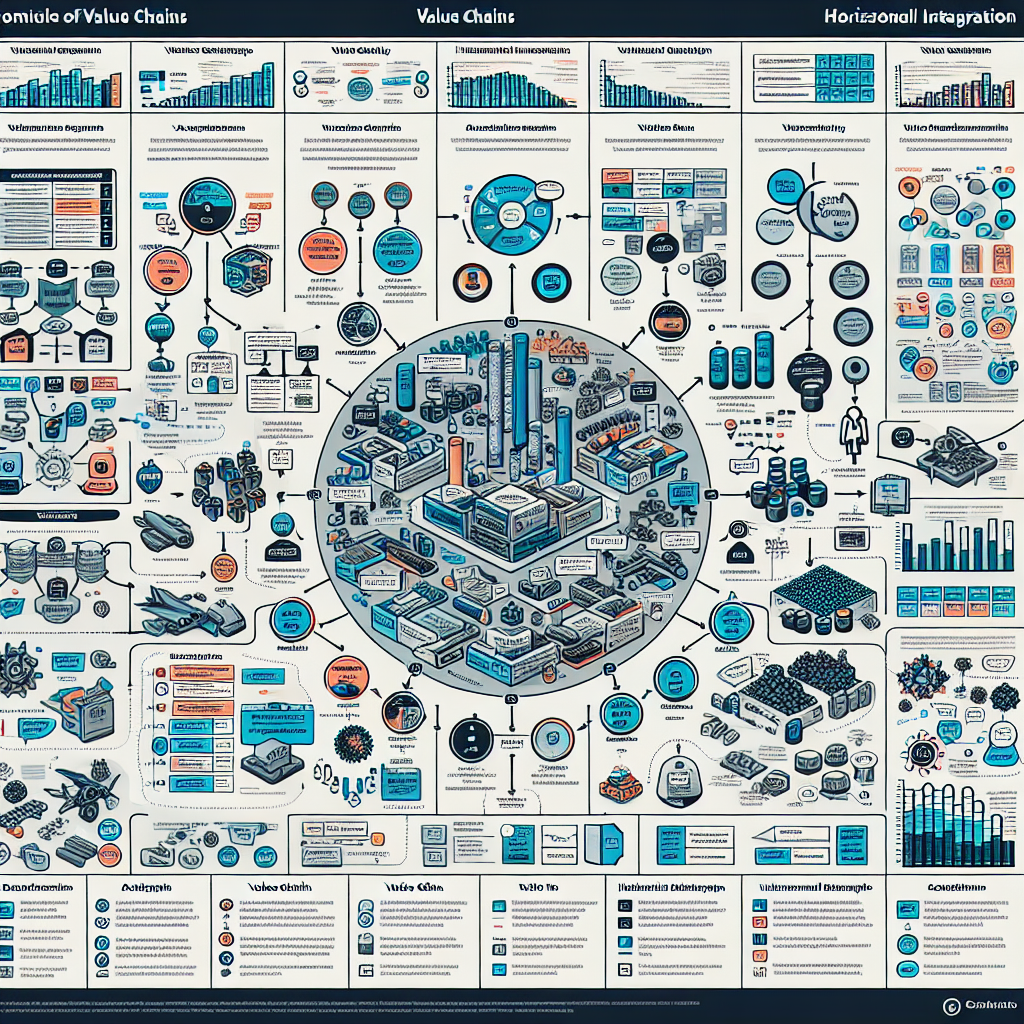The entirety of steps and activities needed to present a product or service to consumers is captured in the concept of a value chain.
From initial conception to reaching the customer’s hands, a value chain consists of sequential stages. This chain highlights each phase that enhances value, encompassing all areas from procurement to promotion during the production process.
Turning an idea into a tangible product or service is effectively managed through a value chain model. By optimizing a value chain, businesses can improve their efficiency, thus ensuring they offer consumers maximum value at minimal costs. A company’s edge in the marketplace is ultimately sharpened by this, as it focuses on boosting production while maintaining cost-effectiveness.
The framework of a value chain, as proposed by Michael E. Porter of Harvard Business School in “Competitive Advantage: Creating and Sustaining Superior Performance,” emphasizes analyzing a company’s discrete activities, from design to final support, to uncover competitive advantages.
It’s essential to optimize each pinpointed stage in a company’s operations to fortify value.
Core Objective
Striving to maximize value delivery while minimizing costs, a value chain aims to secure a competitive position in the marketplace.
Porter categorizes a business’s activities into primary and support divisions. Each industry’s specific activities within these categories might differ.
Key Activities
Comprising five crucial components, primary activities are vital for enhancing value and securing a competitive advantage:
Inbound logistics cover receiving, warehousing, and inventory oversight. Operations transform raw materials into the final product. Outbound logistics manage the distribution of products to consumers. Marketing and sales focus on increasing visibility and targeting key customer groups through various strategies such as advertising and pricing. Service involves maintaining the product and improving user experiences through customer support, maintenance, and ownership assistance programs.
Supportive Roles
Supportive roles are designed to enhance the efficiency of primary activities. Improving the efficacy of any of the four support activities boosts at least one primary activity, and these tend to be reflected as overhead expenses in a company’s financial reports:
Procurement concerns modifying raw material acquisition. Technological development is pivotal during the research and design phases, perfecting production techniques. Human resources (HR) management encompasses recruiting and retaining talent to drive the company’s strategic goals. Infrastructure entails organizational systems and the management team’s setup, including finance, planning, and quality assurance.
Trader Joe’s, a privately held grocery store, serves as an exemplary value chain illustration, with its significant value and competitive stance drawing much attention. While many aspects remain concealed due to its private nature, observable business facets echo the value chain’s five primary activities upon stepping inside a Trader Joe’s.
1. Inbound logistics: Diverging from traditional supermarkets, Trader Joe’s manages its receiving, shelving, and inventory tasks during operational hours. Although potentially unsettling to some shoppers, this approach translates to cost savings on labor. Furthermore, conducting these activities amidst customer shopping reinforces the notion that “we’re all in this together.”
According to 2021 statistics, Trader Joe’s ranked as one of the top grocery stores in customer satisfaction in the United States. This highlights the effectiveness of its value chain strategy.
2. Operations: While traditional operations involve raw material conversion, this may not directly apply to supermarkets. For Trader Joe’s, ‘operations’ can represent any fundamental grocery store function – “product development” in this context becomes integral. Selection and sourcing of products that are unique yet scalable contribute significantly to Trader Joe’s value chain strategy.
Sourcing products efficiently in bulk, coupled with taste-testing and chef collaboration programs, ensures superior quality and continuous product enhancement.
3. Outbound logistics: Though Trader Joe’s doesn’t extend home delivery, its in-store environment offers unique logistical benefits. The customer experience is a carefully designed journey, with enticing in-store tastings creating an engaging and festive atmosphere.
Trader Joe’s logistical tactics include numerous tastings, synchronized with seasons and festivities, adding vibrancy with new, diverse items curated by staff.
4. Marketing and sales: Conventional marketing activities are scarce for Trader Joe’s. However, the richly curated in-store experience itself functions as an immersive marketing tool. Label designs aim at captivating the target clientele, reflecting the company’s understanding of its chosen customer base.
Differentiating itself through unique cultural branding, Trader Joe’s solidifies its competitive position by maintaining a focused customer demographic.
5. Service: Prioritizing customer service, Trader Joe’s ensures ample staff presence compared to shoppers. Employees prioritize customer assistance alongside routine tasks, upheld by a straightforward refund policy.
Why Scrutinize Value Chains?
To make a product appealing to consumers, value chains involve numerous value-adding steps beyond just manufacturing, packaging, and delivery—encompassing marketing, customer service, and post-purchase support. These steps collectively shape a product that resonates with buyers.
As value chains bear resemblance to supply chains, which map out the manufacturing sequence, businesses examine both processes to enhance operational efficiency and increase the product’s value proposition.
Distinct from a supply chain—which merely focuses on resource transition from supplier to client—a value chain considers value addition throughout the process, especially post-sale.
Steps to successfully conduct a value chain analysis, as per Harvard Business School, include identifying primary and secondary activities, evaluating their values and costs, and uncovering avenues for competitive edge.
The concept of a “global value chain” pertains to production tasks distributed across multiple countries. Transnational corporations, composed of interconnected entities globally, implement this model.
From crafting a design to ensuring its safe delivery, a value chain comprises sequential actions in which value is augmented at each phase.
A thorough assessment of a company’s procedures through value chain analysis enhances production efficiency, enabling the business to offer optimal value while minimizing expenses.







